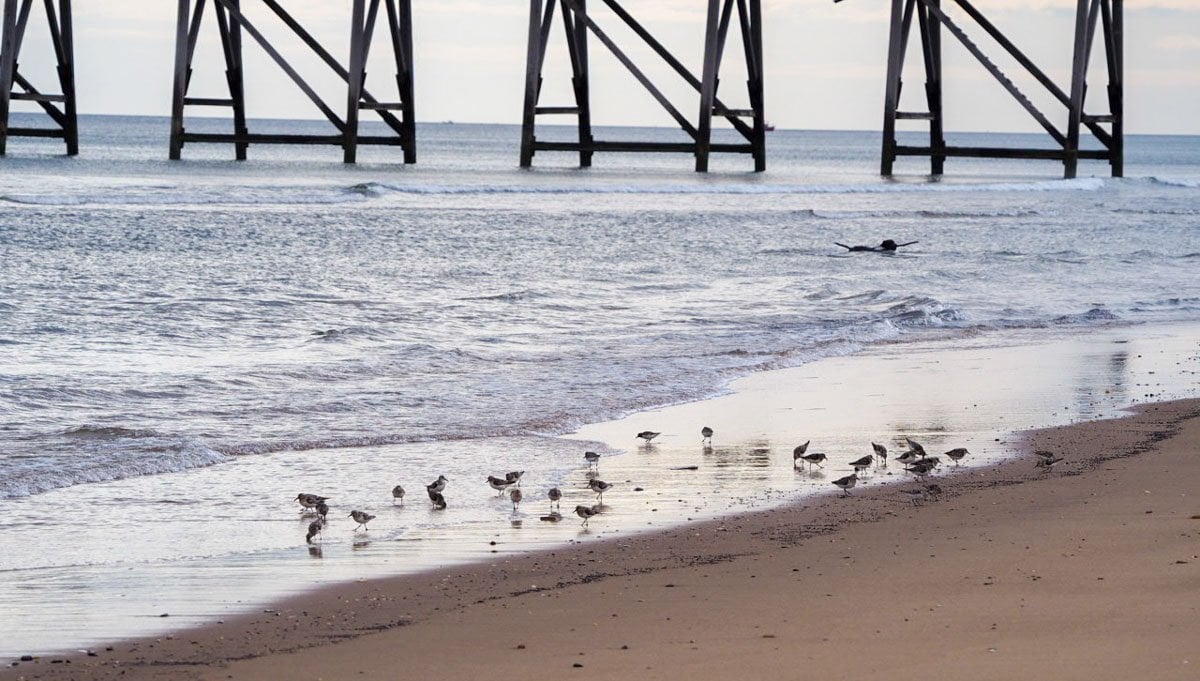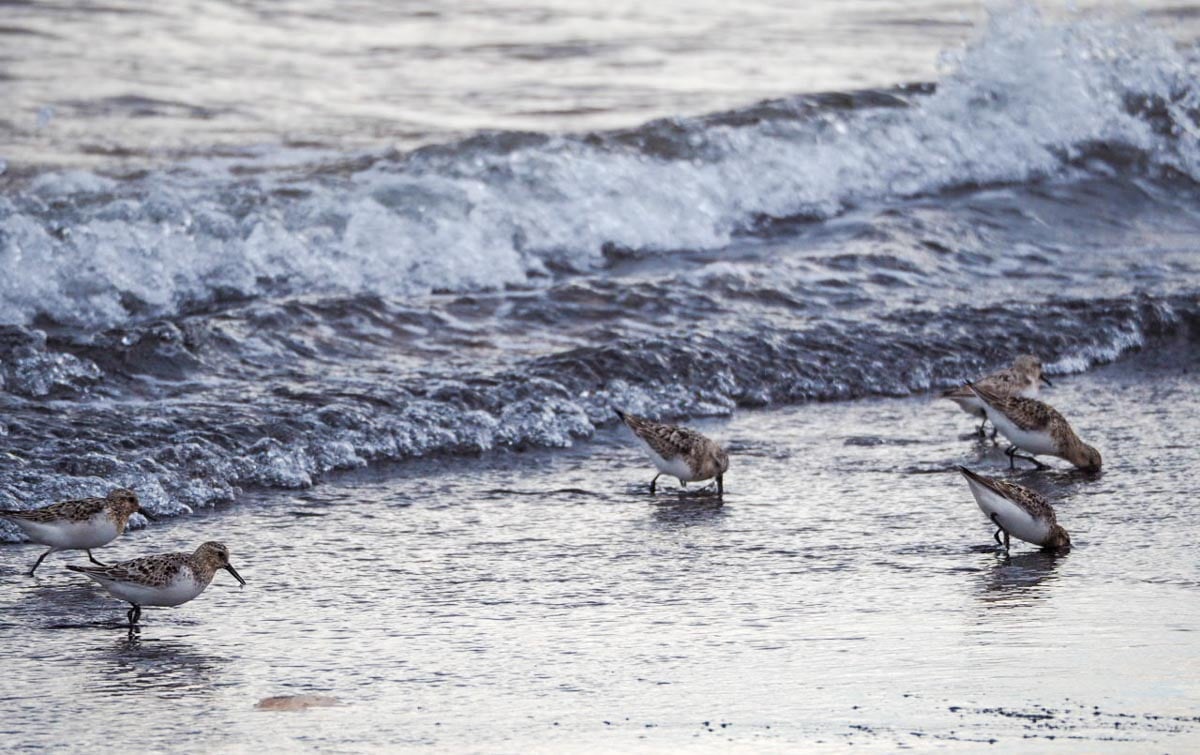A walk along a stretch of beach is so much more than sea and sand as I am sure you will agree. The Durham Heritage Coast is a wonderful way to experience a great deal of variety along a coast line and enjoy walking the coast here enormously. On my recent article about walking along Crimdon Beach I explored some of the delights that can be experienced here, but if you ever come to walk here you are greeted by groups of birds in great variety. And the Sanderling groups are front and centre, walking fast, on their little legs, as a group, at feeding time.

Yes, you cannot miss the groups of Sanderlings, I find their fast walking/running comical yet mesmerising at the same time. If you are trying to get a photo of them they seem to let you get close to a certain point but then scurry away all together at once, keeping that distance without flying off. They are busy things indeed.

The Sanderling is part of the sandpiper family and in fact you see them along much of the UK coastline. And more often than not right where the tide is going in and out, on the sand. Their beaks are perfectly suited for digging in the sand. When you watch them digging they are normally looking for isopods or small crab like creatures. The isopods (little crustaceans like sea lice etc) feed on plankton that come in on the shoreline waves with the tide. To do this they come near the surface. The Sanderlings know this and dig in the tide area on purpose, hunting the isopds when they are most vulnerable.

The seemingly mad running around therefore is not chaotic, but to help them eat/find as much food as possible in the time they have.
I have walked Crimdon Beach many a time this year and have never failed to see plenty of Sanderling groups rushing around.

However, there is another bird I have seen here on the surf line often that I must confess i thought was just more Sanderlings until I researched. These are the Dunlin. Perhaps one the more common waders around our coast.

From a distance it is easy to see a group of these and assume they are Sanderlings or vice versa. A closer look though reveals the Dunlin to have a much browner plumage underneath. Their eating/hunting style is more like a sewing machine at work.

Their diet, as well as crustaceans comprises worms, snails and insects. The sand of the beaches is perfect for them to wade and feast for sure. The Dunlin feeds less chaotic and more methodically than the Sanderling.

Crimdon Beach is home, for the Summer, to Britain’s rarest seabird, The Little Tern. A lot of work has gone into the area for while they are breeding. Enabling this rare bird to be kept in peace and protected but for people to see them with respect. I am looking forward to getting back up there in May.









Wonderful article thanks for sharing. Such beautiful birds and agree the Sanderlings are super cute to watch! Saw a lot in Shetland this summer.
thanks Susie, yes they are fascinating aren’t they?